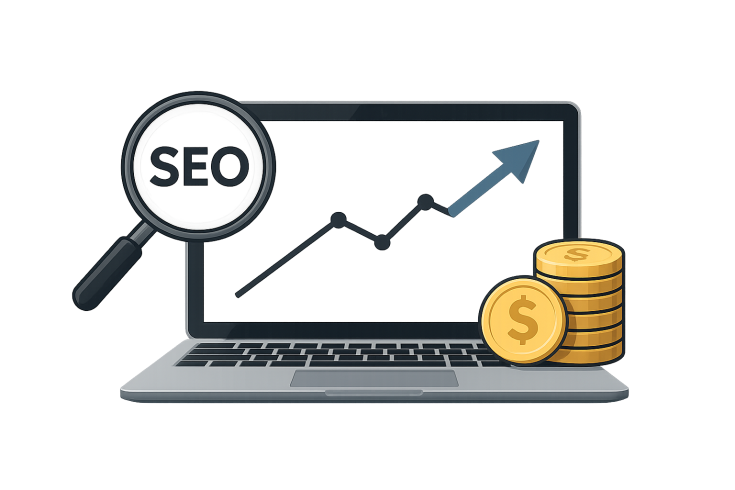Explore Targeting and Context Differences in Advertising Costs

What is the Difference Between Targeting and Context in Digital Marketing?

When navigating the world of digital marketing, its crucial to understand the concepts of targeting and context. These two strategies play distinct roles in how we reach our audience and deliver our message effectively. Have you ever clicked on an ad that seemed to know exactly what you wanted, only to wonder how they did it? Thats where targeting comes in!
Understanding Targeting in Digital Marketing
Targeting focuses on reaching specific groups of people tailored to their interests, demographics, and behaviors. For instance, if youre a fitness enthusiast aged 25-35, you might often see ads for gym memberships or health supplements. This is no coincidence! Advertisers use data to identify your preferences and present you with offers that cater exactly to your needs.
Examples of Targeting
- Age and Gender Specificity: A company selling maternity wear targets expectant mothers aged 20-40.
- Geographic Targeting: A local restaurant using ads to attract nearby customers.
- Behavioral Targeting: If youve been browsing hiking gear online, you might encounter ads for outdoor activities or travel packages soon.
With a plethora of data available, understanding your audiences habits and interests becomes easier. In fact, 78% of consumers prefer targeted advertisements, which proves the effectiveness of this strategy.
What is Contextual Advertising?
On the other hand, contextual advertising refers to placing ads that are relevant to the content being viewed. Imagine reading an article about the best vacation spots—suddenly, an ad for an exclusive travel agency pops up. That’s contextual advertising at work!
Examples of Contextual Advertising
- In-Content Promotions: An article about gardening tips contains ads for gardening tools.
- Keyword-Based Ads: Search engines display ads based on the keywords you searched.
- Content-Related Banners: A real estate blog featuring ads for home insurance.
Both targeting and context work well independently, but when combined, they create a powerful approach to reaching potential customers. Did you know that contextual ads have a 52% higher click-through rate compared to standard display ads?
The Benefits of Combining Targeting and Context
Utilizing both strategies can enhance the effectiveness of your advertising campaigns:
- Higher Conversion Rates: By aligning ads with users interests and current content, you double the chances of engagement!
- Brand Relevance: Consumers are more likely to trust and connect with brands that speak to their immediate concerns and interests.
- Cost-Effectiveness: Targeted ads can be more efficient, reducing wasted spend and focusing on users likely to convert.
| Strategy | Definition | Click-Through Rate |
| Targeting | Ads tailored for specific audiences | 78% |
| Contextual | Ads related to the content viewed | 52% |
| Combined | Using both strategies together | Improved engagement |
Crafting an effective digital strategy can be overwhelming. Thats where zenvello.com comes in! With 20 years of experience and a team of professional specialists, we provide a comprehensive range of services in one place. Whether you need targeted advertising setup or contextual strategies, we have you covered!
Ready to elevate your digital marketing? ⭐ Call us at [email protected] or visit zenvello.com to explore how we can help you grow your business.
How Much Does Targeted Advertising Cost and Why It Matters?

When discussing digital marketing, a crucial aspect that often arises is the cost of targeted advertising. Understanding how much you should invest and why it matters can genuinely affect your businesss success. So, let’s break it down in a straightforward and understandable way.
Understanding the Costs of Targeted Advertising
Targeted advertising costs can vary widely depending on several factors including social media platforms, your target audience, and the complexity of your campaign. Here are some typical costs you might encounter:
- Google Ads: Depending on your industry, costs can range from €0.50 to €5.00 per click. For example, competitive industries like finance might see much higher costs.
- Social Media Ads: On platforms like Facebook or Instagram, you could spend anywhere from €0.25 to €3.00 per click.
- Remarketing Ads: Usually less expensive as you are targeting users who have already shown interest in your services. Costs might start at around €0.10 to €1.50 per click.
What does this mean for you as a business owner? ⭐ It means that by knowing these costs, you can set a budget that aligns with your marketing goals while also ensuring you are reaching the right customers.
Why Targeted Advertising Matters
Investing in targeted advertising is about more than just the upfront costs; it’s about maximizing your return on investment (ROI). Here’s why it matters:
- Higher Conversion Rates: Since these ads reach people likely to be interested in your product, conversion rates can be significantly higher compared to generic campaigns. On average, targeted ads achieve a higher CTR of 78%.
- Improved Brand Awareness: You’re not just selling a product; you’re creating recognition amongst your potential customers. This familiarity can lead to increased loyalty.
- Efficient Use of Budget: By properly targeting your audience, you avoid wasting money on those unlikely to convert. This means every euro spent is more likely to yield results.
Let’s take a scenario: Jane runs a small bakery and has a marketing budget of €500 for the month. If she spends it on non-targeted ads, she might get a few clicks from random audiences. However, if she invests in targeted advertising, she could focus on users in her area who love baked goods, leading to a better ROI.
Comparative Cost Analysis
| Platform | Estimated Cost Per Click | Pros |
| Google Ads | €0.50 - €5.00 | Wide reach, multiple ad formats |
| Facebook Ads | €0.25 - €3.00 | Social proof, high engagement |
| Instagram Ads | €0.25 - €3.00 | Visually engaging, younger audience |
| LinkedIn Ads | €2.00 - €6.00 | Professional targeting, business-focused |
| Remarketing | €0.10 - €1.50 | Targets warm leads, higher conversion |
At zenvello.com, we offer tailored solutions to help you navigate the costs of targeted advertising effectively. With 20 years of experience, our professional specialists can ensure you get the most out of your investment. Interested in maximizing your advertising strategy? ⭐ Give us a call at [email protected] or visit our site zenvello.com to start scaling your business today!
Unveiling Myths: Is Targeting More Effective than Contextual Strategies?

In the ever-evolving world of digital marketing, two strategies often come up in discussions: targeting and contextual advertising. You have probably heard debates about which approach reigns supreme. So, what’s the truth? Is targeting more effective than contextual strategies? Let’s take a closer look and debunk some myths.
Understanding Targeting and Contextual Strategies
Before diving into the effectiveness of each, it’s essential to clarify what we mean by targeting and contextual strategies.
- Targeting: This approach focuses on demographics, interests, and online behavior to reach a specific audience. Think of it like fishing with a net designed specifically for the type of fish you want to catch. You can expect a higher conversion rate here!
- Contextual Advertising: This method places ads based on the content users are currently interacting with, allowing for ads relevant to what they are reading or watching. It’s more like placing bait where the fish naturally swim—aimed at getting their attention just when they want it.
Myths Surrounding Targeting and Contextual Advertising
Let’s bust some common myths around these strategies. ⭐⭐
- Myth 1: Targeting is Always Better - While targeting can yield high conversion rates—often reaching as high as 78%—it doesn’t mean it’s always the optimal approach. Sometimes, contextual strategies can surprise you, especially if your audience hasn’t actively expressed a need yet.
- Myth 2: Contextual Advertising is Ineffective - Many believe that contextual advertising lacks efficiency, but studies show that it can achieve up to 52% higher click-through rates by connecting with users when they are most engaged. Think about reading a recipe and then seeing an ad for kitchen gadgets—this relevance can lead to conversions.
- Myth 3: You Have to Choose One - Many marketers act as if targeting and contextual strategies are mutually exclusive. In reality, the most effective campaigns often combine both strategies, capitalizing on targeting’s precision while leveraging the situational relevance of contextual ads.
Real-World Scenarios
Understanding effectiveness isn’t just about stats—real-world examples can shed light on how these strategies play out in practice.
Consider Sarah, a young entrepreneur looking to promote her new fashion line. She runs targeted ads for her specific audience of women aged 20-35 who love fashion. While these ads perform well, she also places contextual ads within fashion blogs and magazines where her potential customers spend time browsing. This dual approach not only maintains her metrics but also cultivates brand recognition. In her case, the combination brought a 30% increase in website traffic within a few weeks!
Why It Matters for Your Business
Ultimately, understanding the difference between targeting and contextual strategies—and the myths surrounding them—can significantly impact your advertising results:
- Better Engagement: By using both strategies, you cater to users who are ready to buy and those still exploring. This diverse engagement fosters a well-rounded marketing approach.
- Enhanced Brand Image: Relevance improves perception. Your ads become welcome rather than intrusive, ultimately building trust.
- Versatile Budgeting: Depending on your marketing goals and financial capacity, blending these methods allows for flexible budgeting without sacrificing effectiveness.
At zenvello.com, we understand that each business is unique, offering tailored strategies for both targeting and contextual advertising. With over 20 years of experience and a dedicated team of experts, we help you navigate the digital landscape effectively. ⭐ Ready to unlock your potential? Call us at [email protected] or visit us at zenvello.com to learn more!
Current Trends: Understanding Targeting vs. Context in Todays Advertising Landscape

As the digital marketing landscape rapidly evolves, staying ahead of the trends is crucial for businesses looking to maximize their advertising efforts. In particular, understanding the latest developments in targeting and contextual advertising can make a significant difference in the effectiveness of your campaigns. Lets explore the current trends that define these strategies today.
Shifting Focus Towards Personalization
One of the most notable trends in todays advertising landscape is the increasing emphasis on personalization. This trend is primarily driven by advancements in technology and data analytics.
- Data-Driven Targeting: Advertisers are leveraging big data more than ever before—analyzing user behavior, preferences, and even social engagement. Consequently, they can create hyper-targeted campaigns aimed at very specific audience segments. For instance, if a consumer frequently searches for vegan recipes, they may be targeted with ads promoting vegan companies or products.
- Dynamic Creative Optimization: This innovative approach enables advertisers to personalize ad creative on the fly. By analyzing real-time data, ads can be altered to better suit the viewer’s preferences, such as showing different product images or messaging based on their browsing history.
The Emergence of Contextual Intelligence
While targeted advertising continues to thrive, there’s a noticeable shift towards contextual intelligence. This involves understanding the context in which ads are displayed and ensuring relevance to the user. ⭐
- AI-Powered Contextual Analysis: Sophisticated algorithms and AI have changed how we analyze content. Instead of simply placing ads based on keywords, AI allows advertisers to understand sentiment and the broader themes of content, resulting in more effective placements.
- Content Integrity: Advertisers are becoming more aware of the types of contexts in which their ads appear. Maintaining brand integrity means avoiding placements next to inappropriate or controversial content, which can harm a brands perception.
Integrating Omnichannel Strategies
Another significant trend is the integration of targeting and contextual strategies across multiple channels. Consumers today interact with brands through various platforms—social media, websites, mobile apps, and more. Here’s why this is essential:
- Unified User Experience: By employing both targeting and contextual advertising across all channels, businesses create a seamless experience that resonates with users. For example, someone might see targeted ads on Facebook, then go to their email and find a contextual ad based on recent searches; this level of coherence helps reinforce brand messaging.
- Increased Touchpoints: Utilizing multiple channels boosts the chances of conversion. Retargeting campaigns can remind interested users about products they viewed last week while contextual ads engage them within interesting content.
Importance of Compliance and Privacy Considerations
As targeting and contextual advertising become more data-driven, privacy regulations are tightening. Here are the significant implications:
- Transparency is Key: With impending regulations like GDPR and CCPA, businesses must ensure that they are transparent about data usage. Trustworthiness becomes a critical factor when individuals decide to engage with brands online.
- Shift to First-Party Data: As third-party cookies face extinction, companies are pivoting to gathering first-party data directly from customers. This shift allows brands to build deeper relationships based on collected preferences voluntarily shared by users.
Ready to Adapt Your Strategy?
Regardless of whether you lean more toward targeting or contextual advertising, understanding these current trends is essential to stay competitive. At zenvello.com, we specialize in tailoring solutions that encompass both strategies to help businesses thrive in this dynamic landscape. ⭐ With over 20 years of experience, our team of experts is prepared to guide you through the ever-changing world of digital marketing.
If you’re looking to enhance your advertising approach and leverage the latest trends, connect with us today! Call [email protected] or visit zenvello.com for more information!
Fill out the form below and our team will reach out within one business day
